Atelier García's Concrete House navigates materiality with light, time and emotion
by Simran GandhiFeb 19, 2025
•make your fridays matter with a well-read weekend
by Dhwani ShanghviPublished on : Oct 21, 2024
The Sea of Cortez Research Center, in Mazatlán in the Mexican state of Sinaloa, is part of a broader programme aimed at regenerating the Mazatlán Central Park by Tatiana Bilbao ESTUDIO. The urban park, known for its rich flora and fauna, sits by Mazatlán's coastal boardwalk, overlooking the Sea of Cortez (commonly known as the Gulf of California). This marginal sea of the Pacific Ocean, which separates the Baja California peninsula from mainland Mexico, is among the world's most diverse, home to over 5,000 species of micro-invertebrates. The centre, as envisioned by Mexican architect Tatiana Bilbao, aims to integrate the social significance of the gulf with an architecture that engages the public with nature, culture and learning.
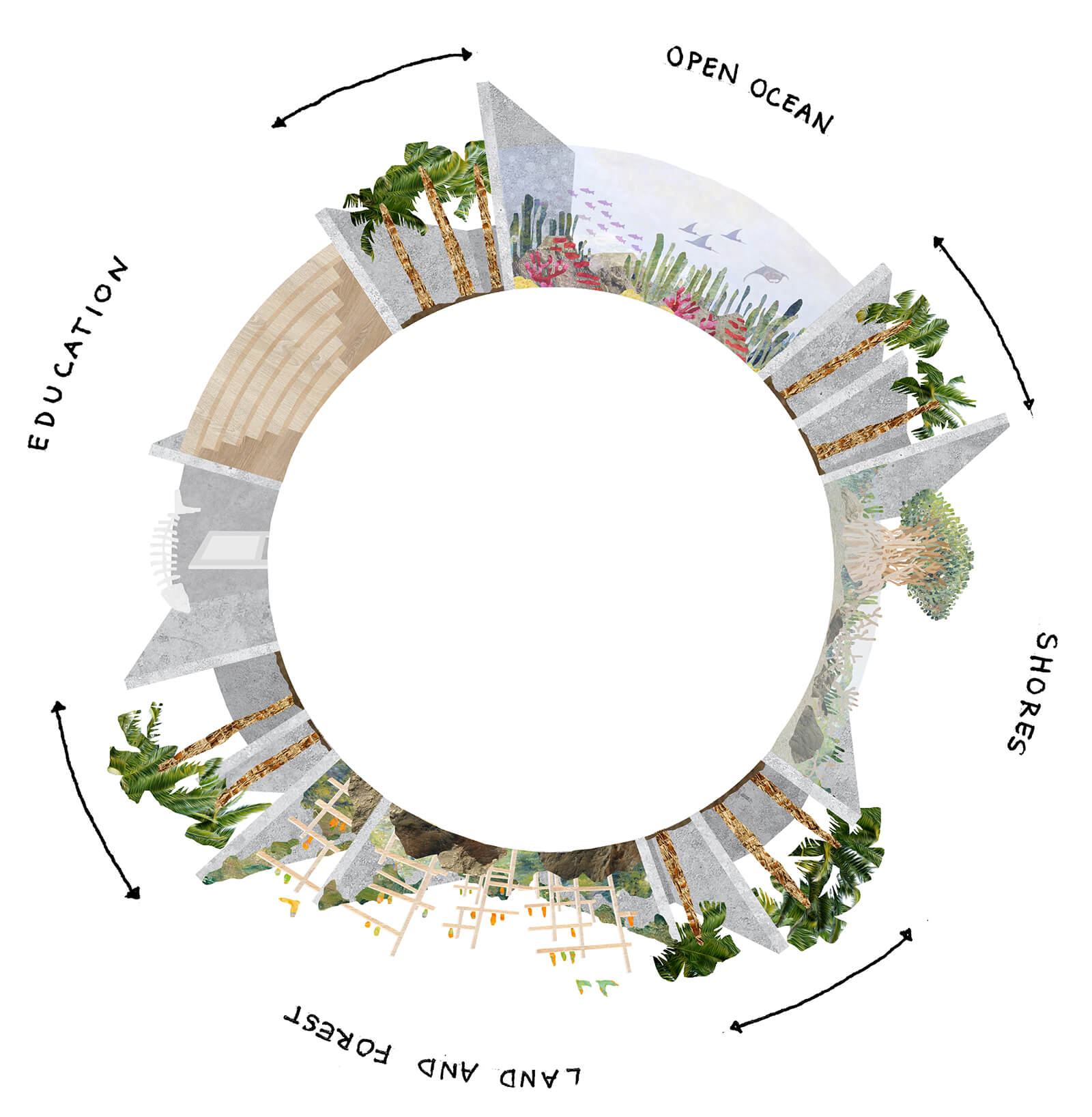
The architecture—primal, plastic and pure—is the culmination of the abstraction of straight lines and geometric forms creating an asymmetric grid. The floor plans, characterised by the black, solid, intersecting horizontal and vertical lines of the walls, are evocative of the geometric abstraction of Neo-Plasticism seen in the works of Piet Mondrian and the De Stijl movement. Seemingly rigid, the rhythmic arrangement of the intersecting walls is reminiscent of the dynamic spatial arrangement defined by the interplay of negative and positive spaces in Mondrian’s work, expressed in the plan through the contrasting scales of enclosed and open rectangular spaces.
This two-dimensional plastic arrangement of the walls is extruded in the third dimension to accommodate Corbusian sculptural plasticity where the regulating lines of the concrete walls appear to emerge at times, recede at others and interlock at yet others. The sculptural expression of the raw, pigmented exposed concrete, brought in sharp relief by the interplay of light and shadow, as well as their dynamic projection—extending outwards and upwards along the three axes to engage with nature—reinforces this plasticity.
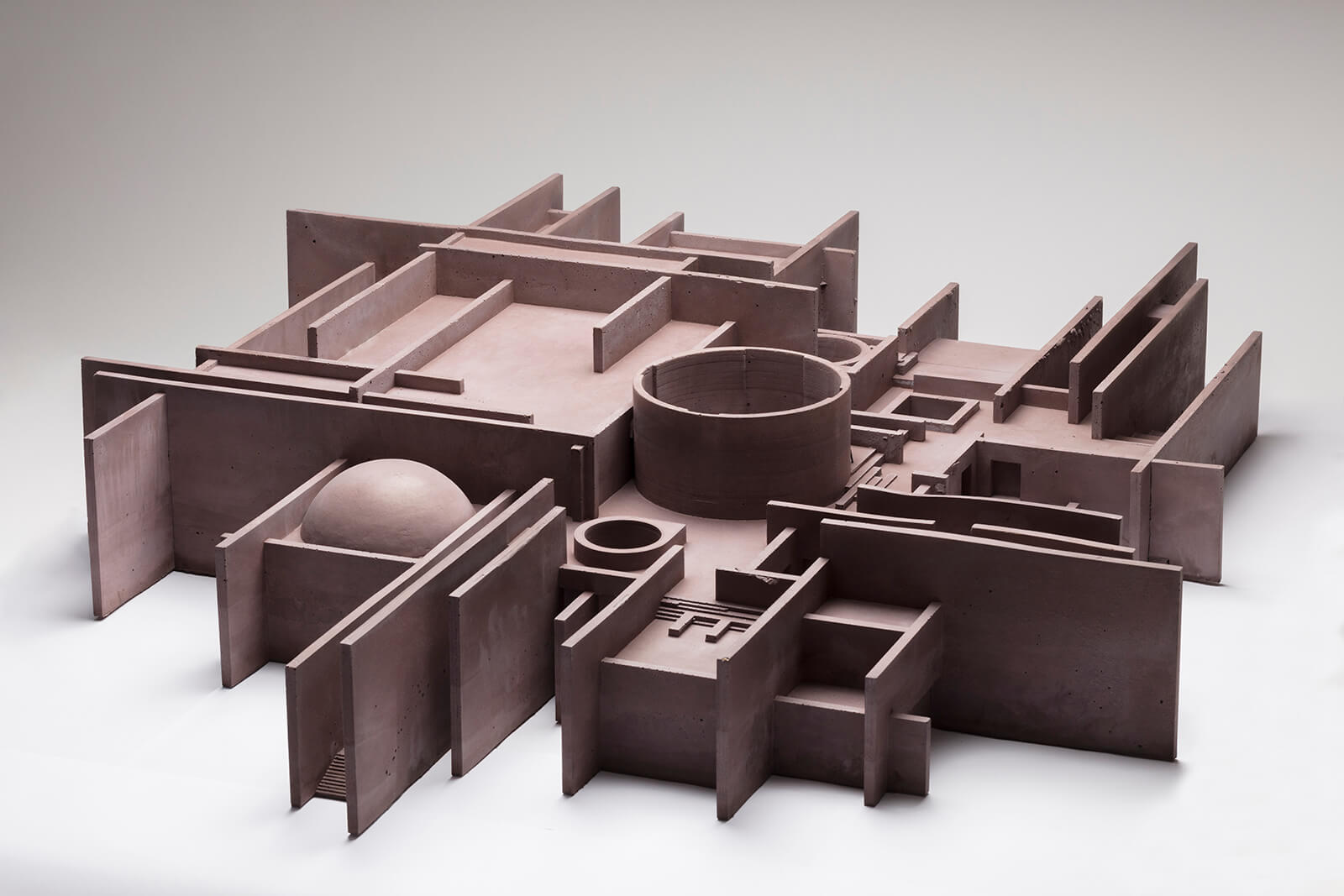
The element of the robust concrete wall serves multiple purposes: as guiding lines, it directs users toward clearly defined volumes; as a structural component, it supports the vertical loads from the flooring systems; as a boundary, it shapes both enclosed spaces and open courtyards that integrate with the outdoors; and as an embodiment of brutalist architecture, it conveys a monolithic disposition.
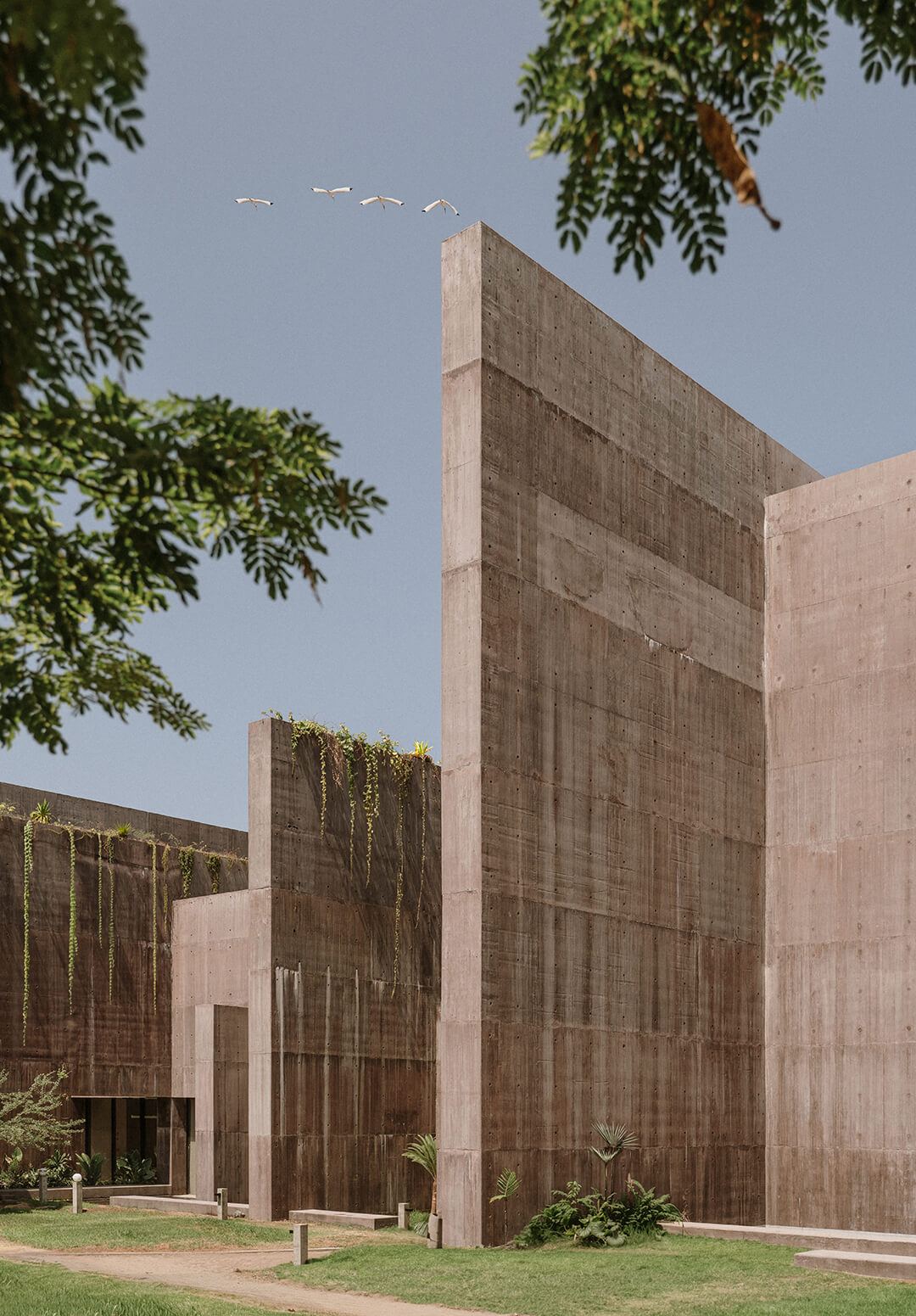
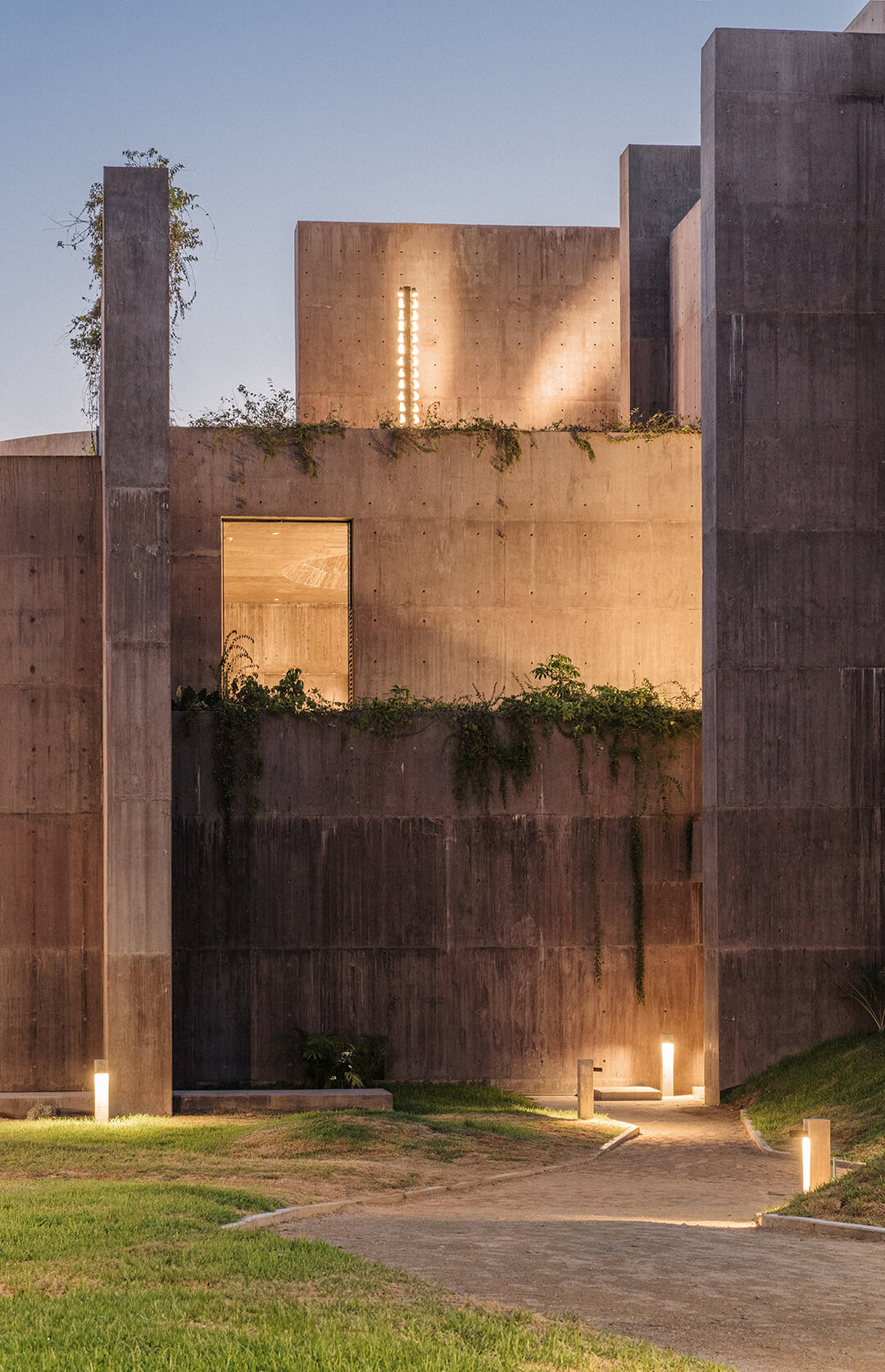
The educational and research centre spans three floors and features large marine tanks showcasing various species and ecosystems, enabling users to engage with native marine fauna. At street level, two straight flights of stairs on either side of the building provide direct access to the roof garden, guided by two elevated walls, which contain the stairs. The journey to the exhibition space starts at the roof garden, with a staircase descending to the central access plaza, where visitors can explore different ecosystems like the open sea, coastal regions and underwater forests as they move downward. Along the way, through a spiral staircase on the first floor, a series of laboratories unfold, utilising the tanks and their marine life.
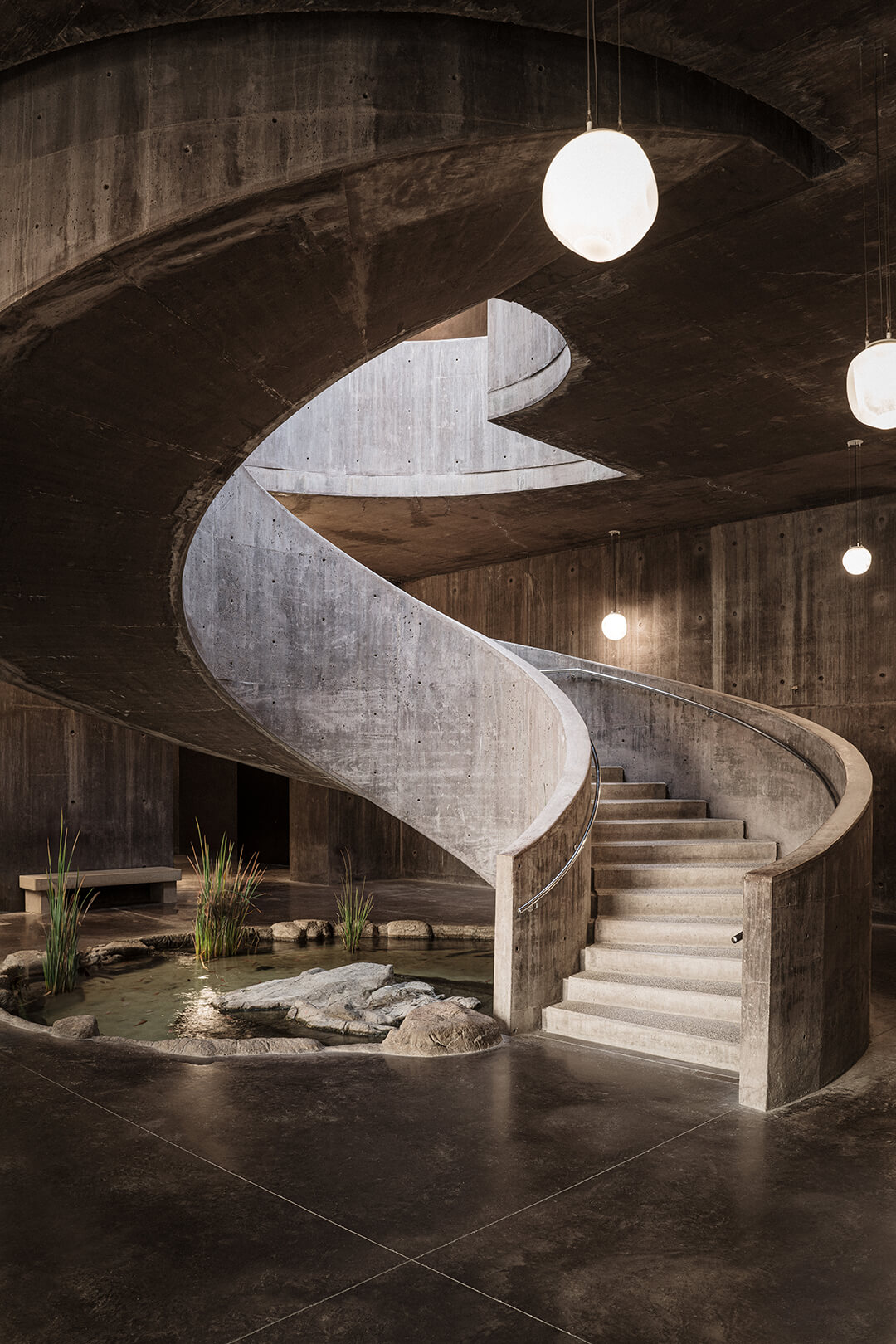
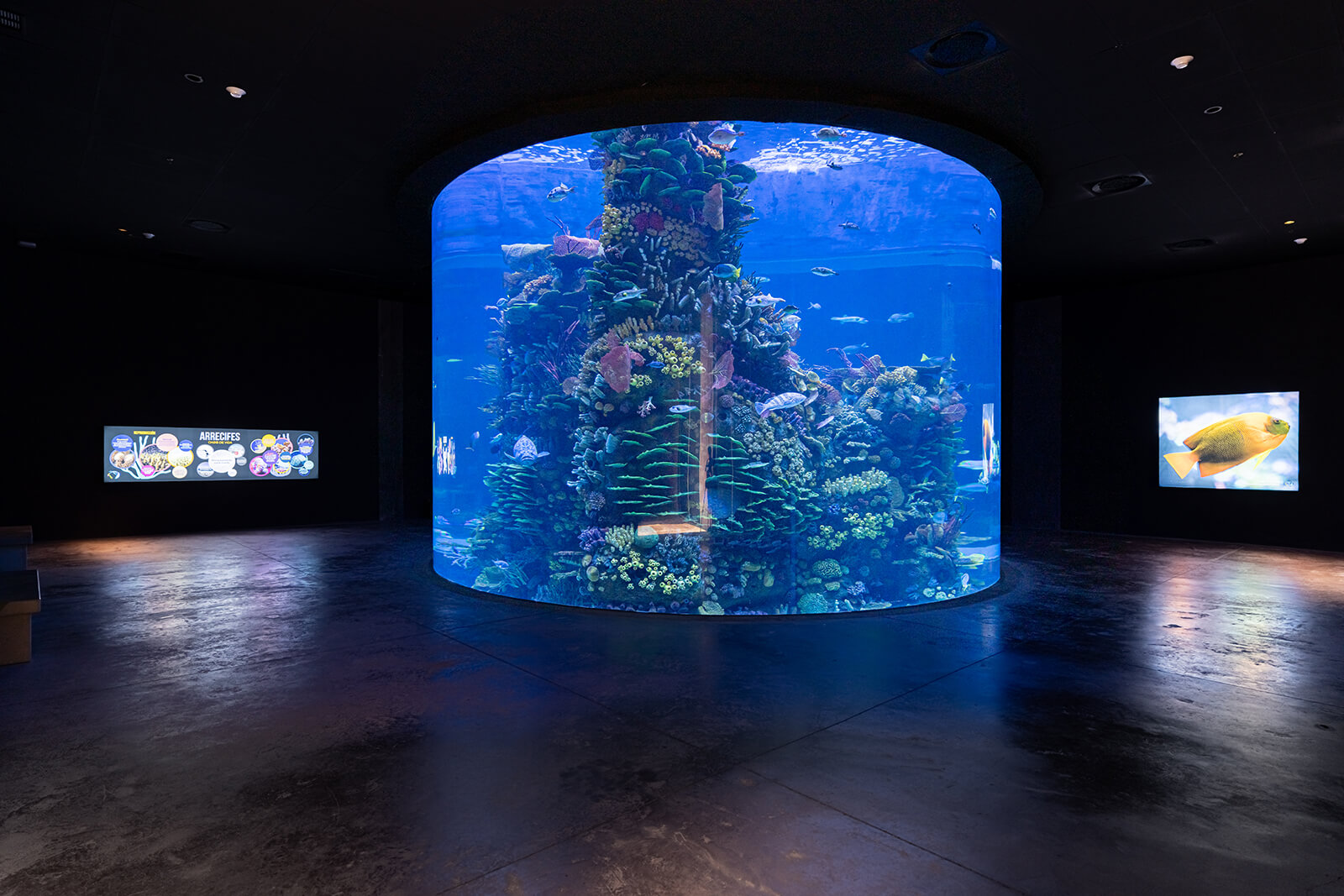
The ground floor contains administrative offices, a reception area for school groups, public services and facilities dedicated to the conservation and life support of marine animals. The first floor features a general access plaza, exhibition spaces and additional public services. Within this level, there is a specific area designated for supporting the large exhibition tanks, along with complementary programmes and equipment for immersive experiences in the oceanic tank. The third level hosts the remaining facilities and equipment for supporting marine life.
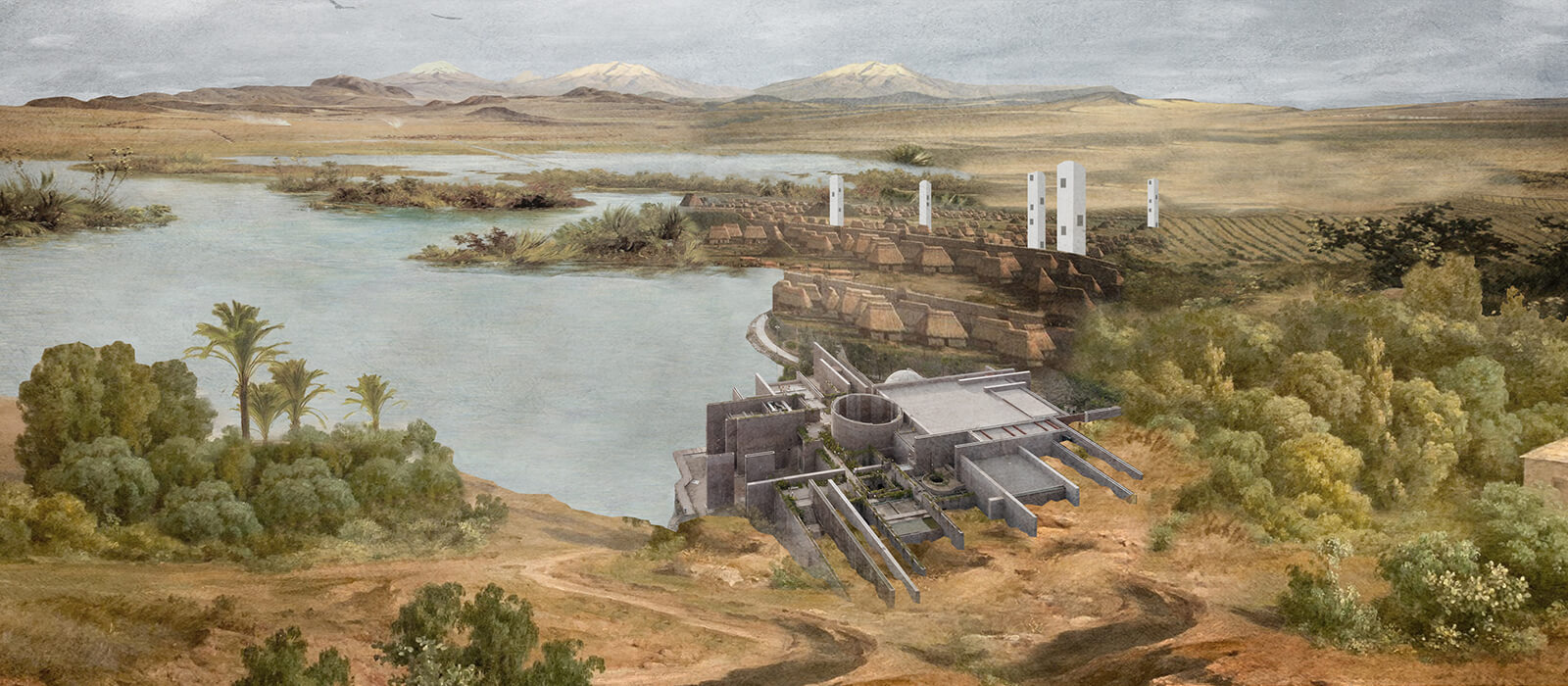
Conceptualised to evoke the image of a submerged ruin uncovered to reveal a thriving ecosystem as the waters withdrew, the building defies classification within an established typology. Taking clues from Mexican ruins, the centre—visualised as a project that resembles the aquarium typology—integrates marine and terrestrial elements in its design, achieving both the appearance of a structure reclaimed by nature; and a syncretic relationship between the natural and built environments. Here, the stark, monolithic concrete wall (suggestive of weathered stone), serves as a canvas for nature to gently assert its presence, weaving itself around the surfaces, subsuming the materiality of architecture as a reminder of humanity’s precarious position in the natural world.
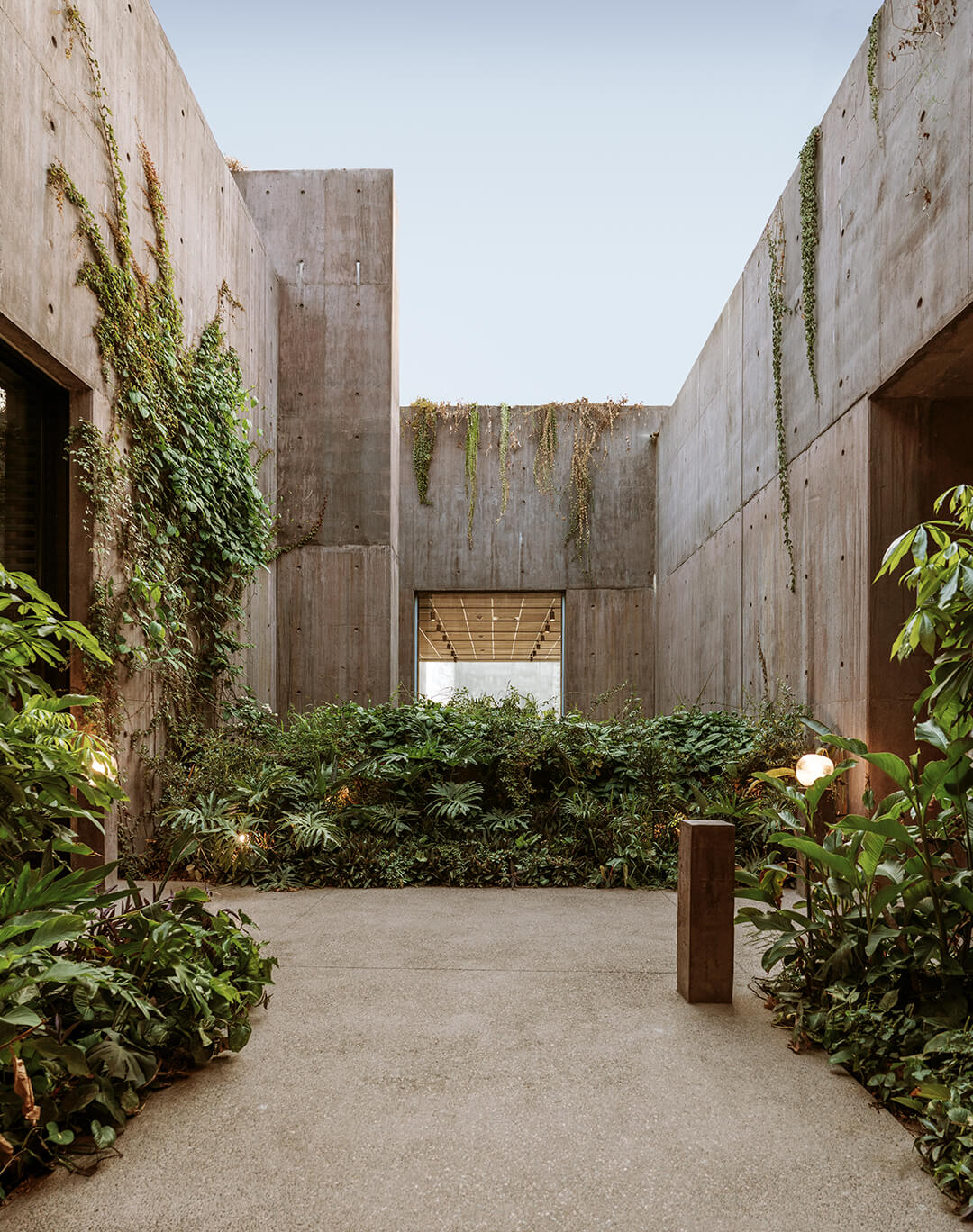
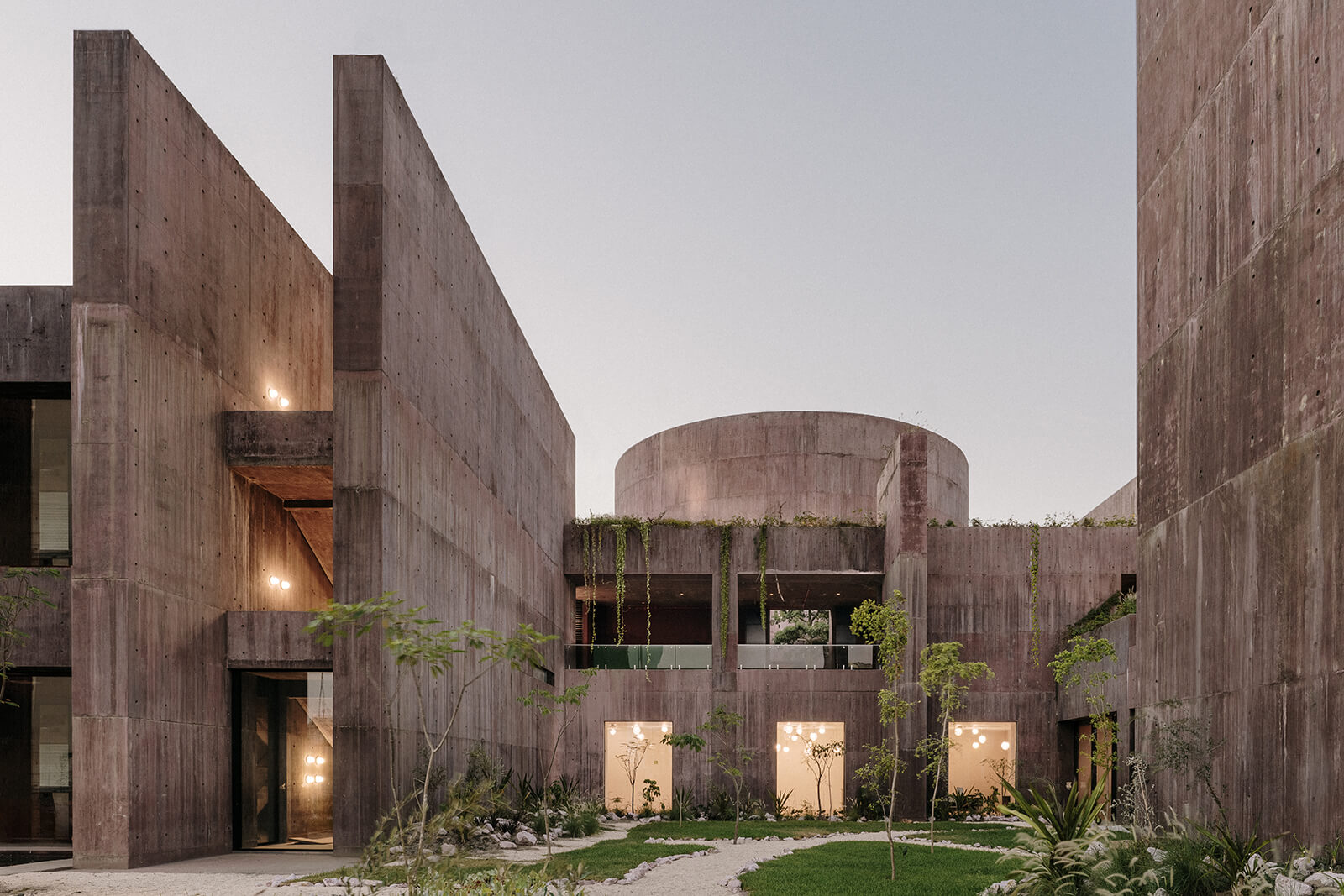
The Sea of Cortez Research Center highlights the tension between the built environment and nature through the integration of strikingly contrasting geometric forms with the organic shape of plants. The synthesis of this functional rationalism of the plan and its consequent extrusion in the third dimension, with a flexible engagement between the built environment and its surroundings, is thus manifested as “a ruin that we have occupied”.
Name: Sea of Cortez Research Center
Location: Mazatlán, Mexico
Typology: Aquarium/ Education / Research
Client: Kingu Mexicana
Architect: Tatiana Bilbao Spamer
Design Team: Sofía Betancur, Simona Solórzano, Gonzalo Mauleón, Mónica Lamela, Pavel Manzano, Steven Beltrán, Vania Aldonza Torres, Christian Belmont, Francisco Lozano, Octavio Herrejón, Pedro Gaxiola, Emma Woodward, Vittoria Di Giunta, Andrea Celso, Daniela Oria, Renata de Miguel, Fernanda Tovar, Patricio Tejedo, Mariana Martins, Elsa Ponce, María Escudero, Miriam Hernández, Kerstin Röck, Helene Schauer, Brice Franquesa, Hyeree Kwak, Morgan Tyson, Ayesha S. Gosh, Carlos Baeza
Collaborators: LIQUEN, Space House, Ocean Wise, Guillermo Roel
Plot Area: 26,000 m2
Built Area: 17,300 m2
Year of Completion: 2024
by Anushka Sharma Oct 06, 2025
An exploration of how historic wisdom can enrich contemporary living, the Chinese designer transforms a former Suzhou courtyard into a poetic retreat.
by Bansari Paghdar Sep 25, 2025
Middle East Archive’s photobook Not Here Not There by Charbel AlKhoury features uncanny but surreal visuals of Lebanon amidst instability and political unrest between 2019 and 2021.
by Aarthi Mohan Sep 24, 2025
An exhibition by Ab Rogers at Sir John Soane’s Museum, London, retraced five decades of the celebrated architect’s design tenets that treated buildings as campaigns for change.
by Bansari Paghdar Sep 23, 2025
The hauntingly beautiful Bunker B-S 10 features austere utilitarian interventions that complement its militarily redundant concrete shell.
 surprise me!
surprise me!
make your fridays matter
SUBSCRIBEEnter your details to sign in
Don’t have an account?
Sign upOr you can sign in with
a single account for all
STIR platforms
All your bookmarks will be available across all your devices.
Stay STIRred
Already have an account?
Sign inOr you can sign up with
Tap on things that interests you.
Select the Conversation Category you would like to watch
Please enter your details and click submit.
Enter the 6-digit code sent at
Verification link sent to check your inbox or spam folder to complete sign up process



by Dhwani Shanghvi | Published on : Oct 21, 2024
What do you think?